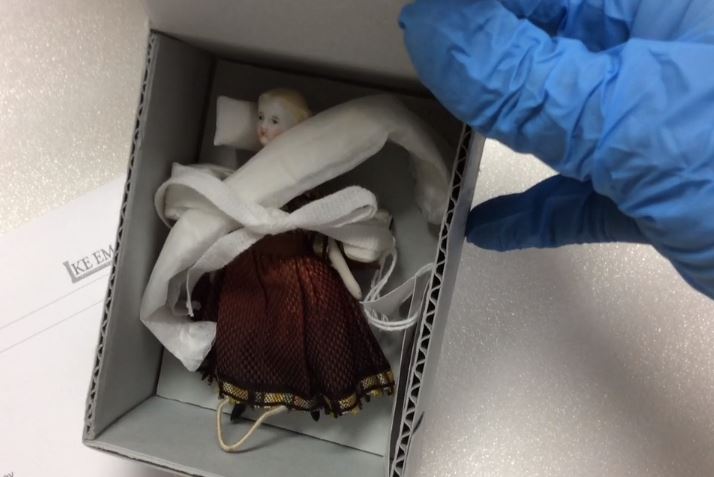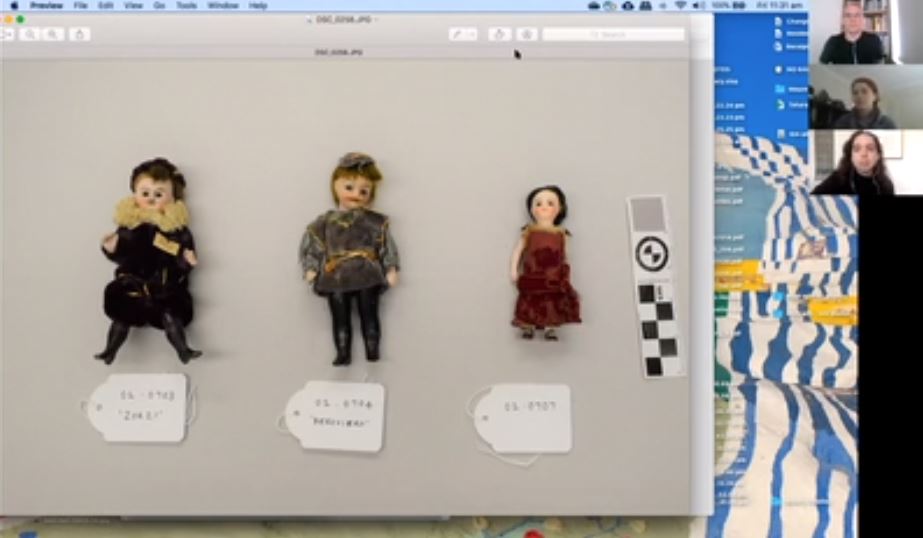Spotlight Collaboration: Issues in Art Conservation
Faced with the COVID-19 pandemic, Multivocal shut its doors to the public, but opened further digital pathways for engagement with students. The below case study details how multiple teams across the University came together to deliver content for a session of Issues in Art Conservation from the Faculty of Arts.
For further information on academic engagement visit Museums and Collections.
Virtual insights into University of Melbourne collections in the time of COVID
The exhibition Multivocal at the Old Quad Treasury Gallery at the University of Melbourne has been kept physically under wraps since it was installed in March 2020, because of COVID restrictions. The physical limitations have shifted the way staff have engaged with students in teaching and learning, and have prompted new collaborative approaches to delivery. Colleagues across the University came together to deliver an innovative online program for students that explored the conservation aspects of the exhibition, including Alex Ellem (Subject Co-ordinator, Issues in Art Conservation, Faculty of Arts), Dr Heather Gaunt (Curator, Grainger Museum), Peter Mitchelson (Paper Conservator, Grimwade Conservation Services), Victoria Thomas (Assistant Conservator, Grimwade Conservation Services), and Emily Kennel (Learning and Engagement Officer, Old Quad).
Alex: “In May 2020 I applied for a phased return to campus for Issues in Art Conservation, a compulsory subject with object focused practical components involving close study of cultural materials. Soon it was clear this was impossible due to social distancing requirements and time constraints for cleaning the specialist learning spaces. Heather and I met with colleagues to discuss using images from the Multivocal exhibition currently in lockdown and related documents for Curatorship students learning about art conservation issues in the remote classroom.”
Heather: “As Curator of the exhibition, I drew heavily on the collections of the Grainger Museum for the Multivocal exhibition. I grabbed a 3-hour window of access to the Grainger Museum Store before Semester started, and made a series of short videos, utilising an iPad, filming myself talking about the process of object selection, and the identification of artwork and cultural artefacts that needed conservation work to be ready for display. Loaded to the Grainger Museum Vimeo account, these could be linked easily to the subject LMS, with additional notes for students to fill in gaps in the story. Showing the Store to the students as part of the videos gave a ‘real life’ perspective to what is an essential, but not particularly glamourous part, of the curatorial task.”

Peter and Victoria: “The work of conservators is often on show without announcing itself. For Multivocal, we provided the conservation and mounting of a few of the artefacts on display--Mona McBurney's diploma, opera dolls and a Solfa chart--with the aim of ensuring the information they contain is fully and safely accessible to viewers. Talking about the conservation process in a virtual meeting, captured for students on Zoom, we had the chance to make our invisible work apparent, and share with prospective curators some context about what to do once a conservation need is identified--the when and the how of engaging with conservators.”

Emily: “Working as Engagement Officer at the Old Quad during our COVID-19 lockdown period has encouraged a lot of creativity around the concept of ‘engagement’ and ‘audiences’. How do we honour the work of our team members while preserving the integrity of an exhibition that was designed for physical visitation? It turns out, with a lot of collaboration from generous colleagues. Engagement with Multivocal has been staggered and tailored for its various audience groups. Targeting academic programs, we worked with Heather to prepare individual resources catered for each different learning situation: short talks, virtual ‘tours’, and object focus. In the meantime, layered updates were added to the website, slowly creating a repository of information while keeping enough under wraps to still encourage eventual visitation. While the exhibition and its marketing materials sit waiting, we continue to generate learning and ‘buzz’ from behind closed doors.”
Alex: “Although students are seeing images of things, not the things themselves which are a key element of object focused learning, the access to high quality images, related documents and video provide critical content that is directly relevant to curatorial responsibilities. The shared resources offer nuanced information about conservation condition reports, conservators talking about treatments and many great images of before, during and after treatment photos as well as some objects in storage. Students love this kind of access to detailed discussions of process and visual evidence. It is all the better because we are using the university collection and expertise. I thank everyone for their enthusiastic support and contributions to this project.”